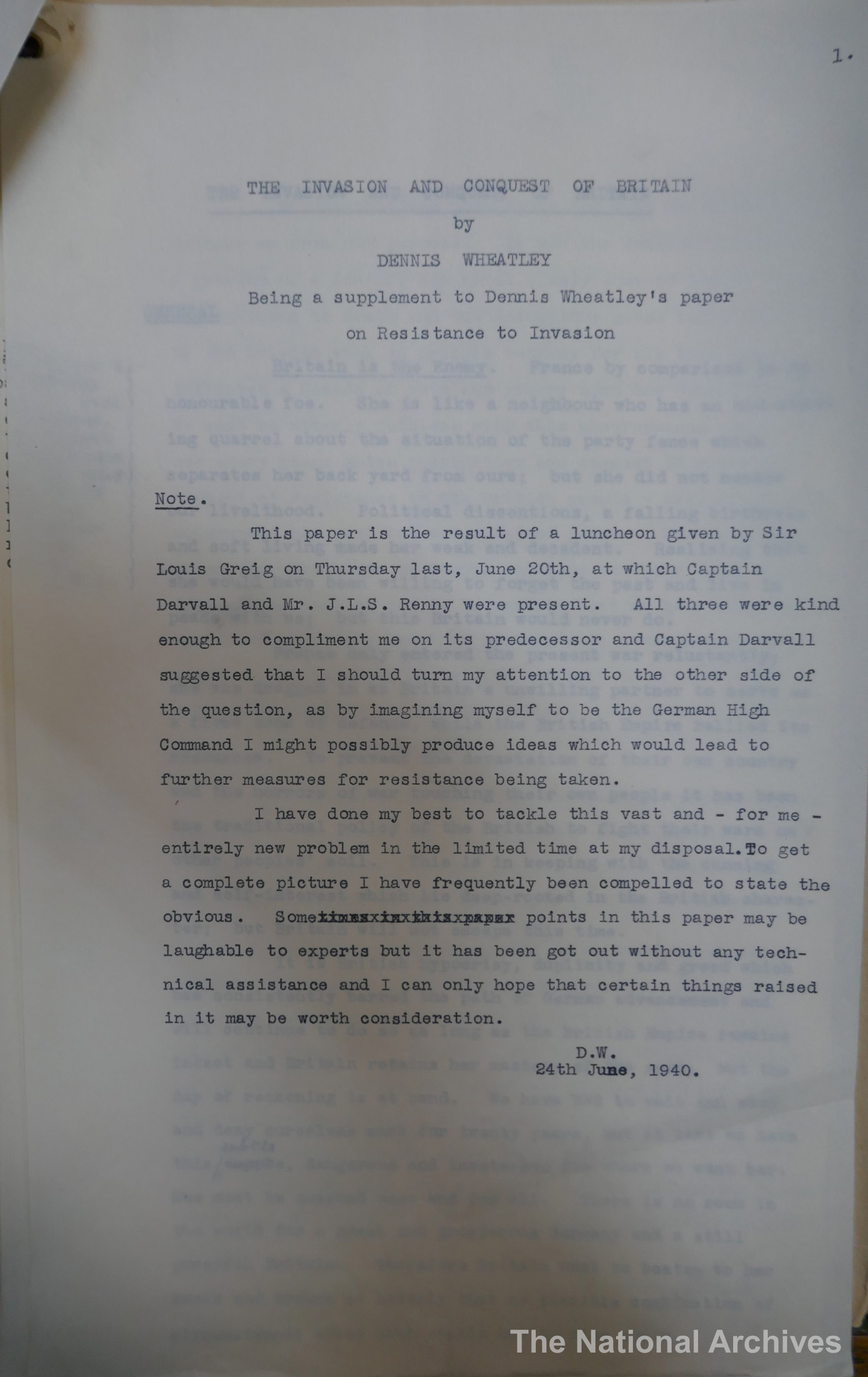
 |
Floor Plan |  |
The Dennis Wheatley 'Museum' - Dennis Wheatley in World War II: a supplement
The second phase - DW writes his civilian 'War Papers' - and their official reception as seen from papers in The National Archives

The cover page of AIR 2/5165, which contains the relevant material in The National Archives
Click on the image to enlarge

'I agree with D. of Plans that the main paper is a brilliant effort for a non-military writer'
Click on the image to enlarge
As outlined in Room 8, as a result of a chance conversation between DW's wife and a Captain Stringer, between May 1940 and August 1941, DW was to write as a civilian a total of twenty 'War Papers' on a variety of subjects to do with strategy in World War II, and these went all the way to the Chiefs of Staff - the handful of senior officers in charge of the direction of the war.
A footprint of the earliest papers - and of the reaction to them - survives in The National Archives, and some of these papers are reproduced above.
It is clear that while some of DWs suggestions were felt to be fantastic, his views as an 'informed outsider' were much valued.
In an early example, when he was asked to write his second 'War Paper', about how he thought the Nazis would set about invading England, DW put forward a complex scheme whereby over five days, the Germans might systematically divide Britain up so that reinforcements could not be sent from one part of the country to another, and then, after a series of 'dummy' attacks, make their main attack towards London via Calais and Kent. Neither of these possibilities had apparently been planned for. The military planners had not considered the possibility of operations designed to prevent troops from moving across from one part of the country to reinforce other parts of the country, and they had also decided that the main thrust of the enemy offensive would be towards Suffolk. It gave DW much satisfaction when the war was won and enemy intelligence became available to find that the Nazis had indeed decided to make Kent the primary target of 'Operation Sea Lion'.
The historian I commissioned to consult the archives was unable to find any of DW's subsequent 'War Papers' in the Archives. Either they are in a different file, or - as he believes more likely - as they were all sent to the senior individuals in an individual capacity, they may have escaped official record keeping.
It will be noted that those Papers we found in AIR 2/5165 were only declassified in 1968.
References : The Museum, Room 8
'Stranger Than Fiction'
The Devil is a Gentleman Chapters 29-30.
Provenance : Dennis Wheatley's copies of his War Papers: Private Collection
All other photos courtesy of The National Archives [AIR 2/5165]










